

Vol. 38 (Nº 33) Año 2017. Pág. 30
Mihail N. DUDIN 1; Natalia, A. VOYKOVA 2; Еvgenia Е. FROLOVA 3; Julia A. ARTEMIEVA 4; Petr A. KUCHERENKO 5
Received: 05/06/2017 • Approved: 15/06/2017
ABSTRACT: The purpose of this article is to summarize a systematic approach to the implementation and development of green technologies in the global textile industry. The key conclusions are as follows: |
RESUMEN: El propósito de este artículo es resumir un enfoque sistemático para la implementación y desarrollo de tecnologías verdes en la industria textil mundial. Las principales conclusiones son las siguientes: • junto con el daño medioambiental causado por un componente de la industria textil, un componente logístico también tiene un impacto muy significativo en el medio ambiente; • las cuestiones relativas a la transición de la industria textil mundial a un modo de desarrollo ambientalmente responsable deberían abordarse sistemáticamente mediante una transformación general de los componentes de fabricación y logística; • Las tecnologías de fabricación verde, complementadas con tecnologías logísticas "verdes", así como la transformación de la demanda de los consumidores hacia productos textiles ambientalmente sanos, garantizan un efecto sistémico y sinérgico, que se traduce en una reducción significativa de la carga antropogénica y antropogénica del medio ambiente. |
Gradual transition from the concept of global sustainable development to the concept of global green economy and environmentally responsible society defines transformation in the sectors and areas of reasonable human activity (Egert, 2015; Valickova, Havranek and Horvath 2015; Towards a Green Economy: Pathways to Sustainable Development and Poverty Eradication). The international community’s understanding and recognition of environmental threats can be judged by a simple fact: over the period from 2006 to the present time, the number of online queries "sustainable development", "green economy" has multiplied (Gurel, Acar, Onden and Gumus 2015). Not only the number of research papers on the issues of environmentally responsible development, but also a number of practical and applied technological solutions have increased, implemented in the economic, social and domestic sector and aimed at reducing the negative antropogenic and anthropogenic impacts on the environment (Cecchetti and Kharroubi 2015; Harrell 2015).
"Green" economy is a concept that defines that further growth of welfare and ensuring social justice would be possible under the conditions of reduction of risks to the environment and the degree of its depletion. In other words, the "green" economy is a resource-efficient, low-carbon and socially inclusive useful economic activity.
All this also fully applies to the textile industry, which uses significant amounts of vegetable and animal raw materials in production, which in turn requires to increase the area of agricultural land. The finishing production of textiles uses a wide variety of chemicals and specialty chemicals, the wastes from which pollute the atmosphere and form the highly contaminated wastewater streams. Not only the manufacturing, but also the logistics processes in the textile industry are harmful to the environment. Due to the strongest territorial and geographical disparities, the bulk of the textile production is localized in developing countries. The main sales of textile products fall for the most developed countries of North America, the European Union, and Japan (Haberl 2014). Accordingly, the logistics flows generated by textile enterprises increase and enhance the level of environmental harm caused by the production of finished products. Exhaust emissions to the atmosphere, pollution of wastewater, increase in the load on the transport and logistics infrastructure, and increase in consumption of traditional hydrocarbon fuels are only a small part of the logistics problems of the textile industry lying on the surface. Therefore, along with aspects of the implementation and use of "green" manufacturing technologies, it is necessary to take into account the aspects of the implementation and use of "green" logistics technology in the field of textile industry as well.
From the methodological point of view, this article represents a content analysis of empirical, economic, statistical, scientific and theoretical sources that investigate the problem of the global transition to a "green" economy and the use of "green" logistics technologies.
The existing variety of definitions and scientific ideas about the essence of "green" logistics are identical to the basics of understanding of the strategic concept of "green economy" (Towards a Green Economy: Pathways to Sustainable Development and Poverty Eradication). In other words, "green" logistics is a resource-efficient, low-carbon, environmentally friendly and socially responsible (inclusive) organization of transport and logistics flows in the sectors and areas of useful economic activity (Christof and Ehrhart 2012; Grand View, 2010; McKinnon, Browne, Whiteing, and Piecyk 2015). The basic problems of use of "green" manufacturing and logistics technologies in the textile industry were considered from this theoretical and methodological point of view.
Global volume of textile products sales has increased almost 1.6 times over the last 15 years (from 2000 to 2015) (Haberl 2014; Szreter 2016). The main production areas are concentrated in the Caribbean, South Europe, South, East and South-East Asia, and sub-Saharan Africa. The main consumer areas are primarily the most developed countries of North America, the European Union and Japan. Currently, China is the leading exporter on the global textile market; the share of textile exports from China has increased from 22% to 39% over 15 years (Figure 1).
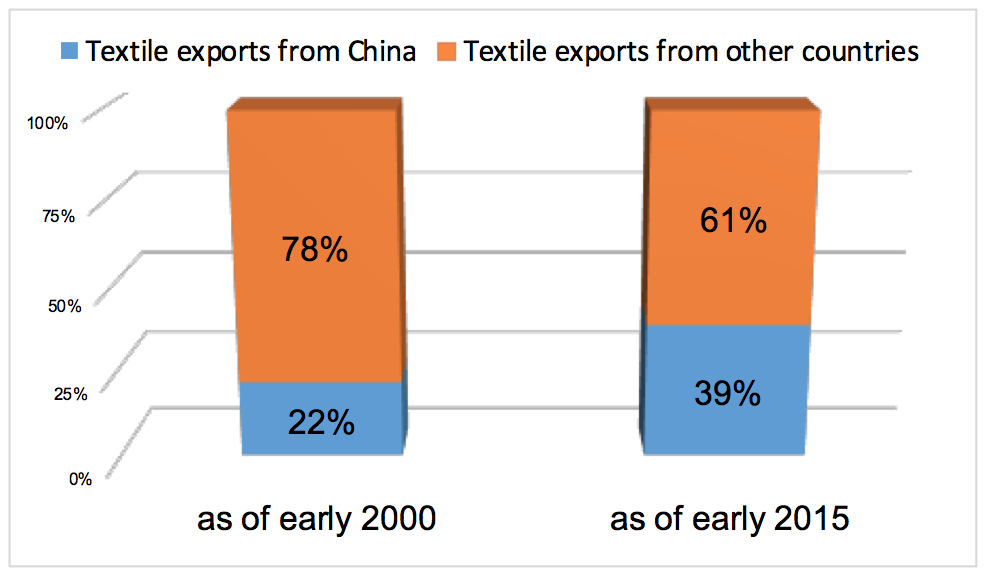
Figure 1: Changes in the share of exports of textile products
from China (Haberl 2014; Szreter 2016).
The positions of other exporters on the textile market have also changed over the last 15 years. In particular, Hong Kong, South Korea, the Philippines and Taiwan have substantially reduced their share in textile exports. In contrast, Bangladesh, Cambodia, India, Indonesia, Pakistan and Vietnam purposefully increase their share in the world exports of textiles. The positions of the leading European countries (EU-15), Morocco, Tunisia and Turkey have remained virtually unchanged in the global textile exports, but it is becoming increasingly difficult for these exporters to compete with exporters from the segment of developing countries. This leads to the consolidation of assets in the European textile industry and the concentration of capital to increase the business profitability.
Despite the fact that artificial (chemical and synthetic) fibers have been actively used in the manufacture of textile products over the past two decades, the proportion of the natural fibers use is also very high (Figure 2).
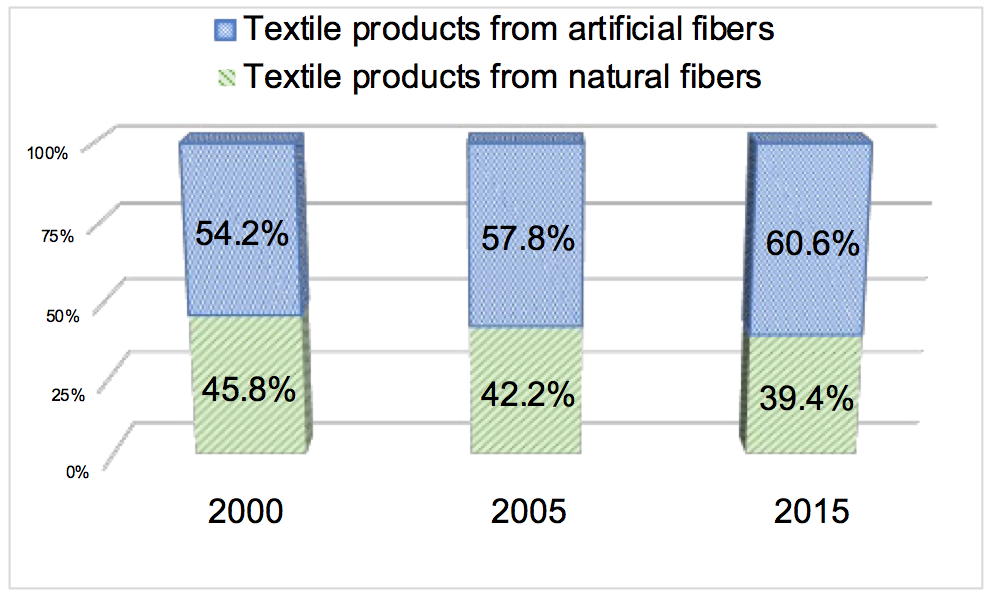
Figure 2. Structure of the global volume of textile production and sales in
the context of the raw materials used (Haberl 2014; Szreter 2016)
It is expected that the structure of the global demand for textile products will change in the future: developing countries already provide 64% of the world consumption of textile products (Figure 3).

Figure 3. Structure of the global volume of sales of textile products in the
context of developed and developing countries (Haberl 2014; Szreter 2016).
The environmental requirements for textile production have been introduced in the economically developed countries of Europe, as well as in the US, Japan and Canada due to the fact that the chemicals used in the manufacture of these products had a very serious impact on anthroposphere, biosphere and the environment condition (e.g. formaldehyde poisons wastewater, phenols reduce biodiversity of the rivers, both of these agents affect the central nervous system). The adoption of the environmental requirements for the quality of textile products and the security of its production by a number of developed countries led to the increase in the price for these products for end users and development of the technology of second hand use and recycling of these products. Developing countries still have no uniform environmental requirements for the quality of textile products and safety of its production, so the cost of production of textile products in these countries is lower.
Developing countries are characterized by low labor costs, in part due to the fact that the basic safety requirements for the organization of labor of the textile production workers are not respected.
Due to the negative impact of the textile industry, the highest mortality rates in the economically active age retain, fresh water reserves reduce, and exhaust emissions (carbon dioxide) grow in developing countries, which leads to disruption of the ecological balance, affects anthroposphere and the biosphere as a whole. The major environmental problems related to both the production of textile products and logistics flow in the textile industry are most expressed in the countries of South-East Asia; the problem of recycling industrial waste and finished products that have completed their life cycle is the most acute in this region.
The presented calculations, made by the authors on the basis of available sources (Haberl 2014; Szreter 2016; Alay, Duran and Korlu 2016; Vezzetti, Alemanni and Macheda 2015), have shown that while in the early 2000s the negative impact of the industrial component on the environment was prevalent, as of early 2015 the negative impact of the manufacturing and logistics component on the environment was almost equal (Figure 4).
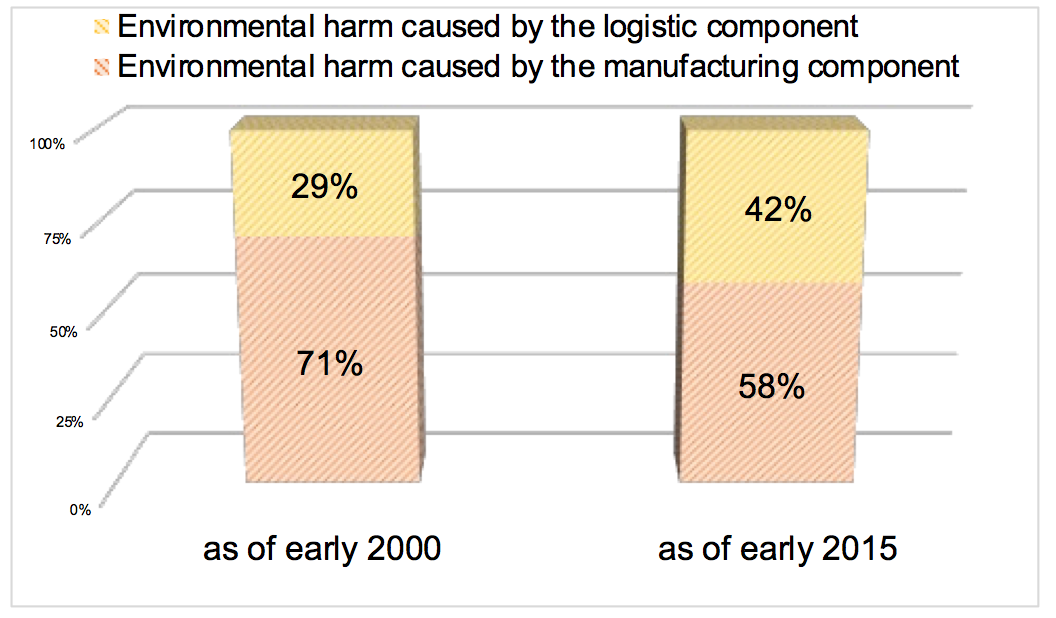
Figure 4. Specific contribution of manufacturing and logistics components
of the textile industry to the formation of environmental harm.
It is obvious that these circumstances require a systematic approach to solving problems related to environmental safety and environmental responsibility of the global textile industry.
The traditional cycle of production and sales of products in the textile industry is as follows (see Figure 5): from procurement of necessary resources through their conversion into finished products and sales of finished products on the free market. It is extremely difficult to ensure the transition from resource-consuming activity to resource-efficient and environmentally responsible activities of textile enterprises as part of such formation of manufacturing and logistics processes (Yildiz 2016).
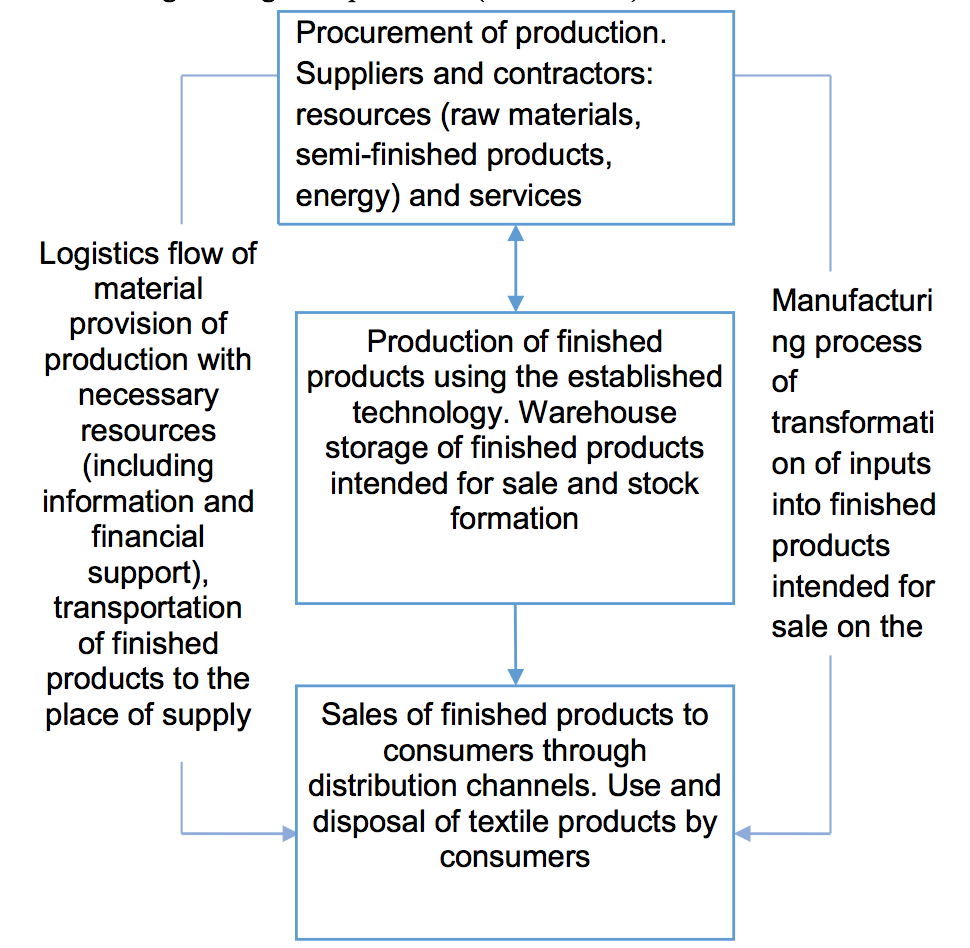
Figure 5. Traditional production and distribution cycle of the textile industry enterprises.
It is proposed to systematically reform the approach to building a business model of the textile enterprises, which also will focus on greening of both the manufacturing and logistics component at the same time (see Figure 6).
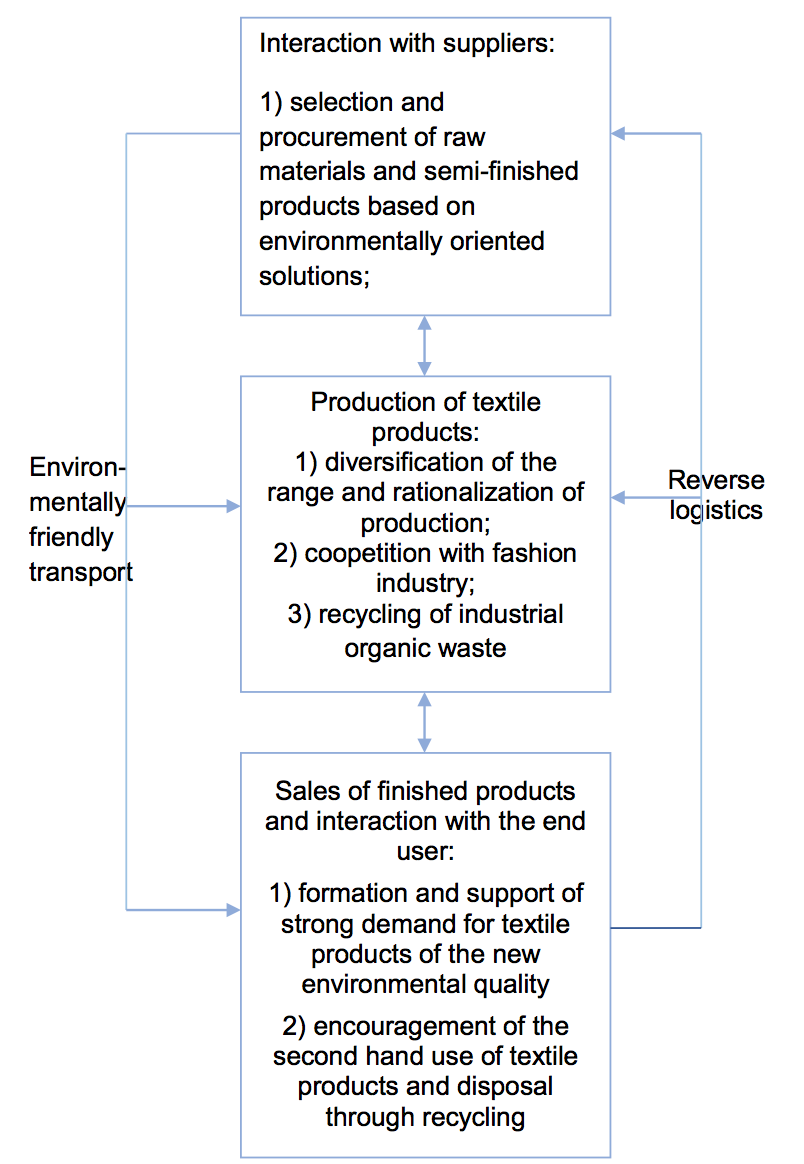
Figure 6. Environmentally responsible approach to the organization and formation
of manufacturing and logistics processes in the textile industry enterprises.
When a textile enterprise builds relationships with its suppliers, it needs to consider two key points:
Selecting and procuring raw materials (materials, semi-finished products and other business services) on the basis of environmentally oriented approach means the following. The first step is to correlate the level of environmental harm caused by the use of natural and synthetic raw materials. Natural raw materials are more resource-intensive in terms of its production, but less environmentally aggressive. The resource intensity of production of natural textile fibers can be reduced significantly with proper organization of the activity of the raw material bases: genetically modified crops can be used in production of natural fibers, which allow to obtain high yields without increasing acreage, while genetic engineering of crops can ensure extended shelf life of the collected raw materials and reduce the level of defective raw materials. Production of synthetic fibers is less resource-intensive, but at the same time is characterized by environmental aggression to a greater extent. Therefore, artificial textile fibers, semi-finished and finished textile products must be purchased from suppliers that have environmental certifications for their products. The cost of environmentally friendly natural synthetic fibers, as well as other materials and semi-finished products, is much higher than that of the environmentally hazardous products. But at the same time, a textile enterprise can provide a higher level of return on its costs in the process of formation of environmentally oriented demand among consumers by offering products with high added value.
The second step is to optimize the volume of procurement, diversify its structure and ensure the greening of energy supply in the supply of textile enterprises with energy resources. Textile enterprises constantly increase volumes of procurement of energy resources, as the production volumes constantly grow; all together, this leads to an increase in environmental harm. Therefore, the consumption of energy resources must be optimized in order to meet ever-increasing energy needs of textile enterprises, i.e. energy efficiency of operation must be increased. This is achieved through the use of energy-efficient equipment, modernization of infrastructure and utilities, and also due to the constant control and monitoring of the feasibility of energy consumption and increasing the volume of their procurement. It is also important to diversify the structure of procured energy resources, ensuring the transition of textile enterprises to the use of renewable low-carbon energy. The enterprise can satisfy part of its energy needs through recycling of vegetable waste and other biomass waste (Kumar, Agrahari and Roy 2015; Avelar, Passos Rezende, Carneiro and Mudadu Silva 2016; Hasanbeigi and Price, 2015).
Following on, it should be noted that the production of textile products should be accompanied by: product range diversification; coopetition; waste recycling.
Product range diversification means that the textile enterprise, along with the output of conventional products, organizes the output of environmentally friendly textile products using "green" production technologies, such as technology of bleaching fibers using oxides and hydroxides of hydrogen, which will allow to abandon chlorine. It is best to use electrochemical deposition and vacuum thermal deposition (magnetron sputtering) instead of the traditional techniques of dyeing and coloring of textile fabrics. Such techniques of dyeing and coloring are not only environmentally optimal but also cost-effective (Anand, Rajan, Narayan and Bapu 2015).
Rationalization of volumes of textile production should rely on the fact that intensive expansion rather than extensive is important, when the textile enterprise increases the volume of products with high added value consistently and at a steady pace. However, in order to obtain products with high added value, the textile enterprise needs to increase the real value of such products for the consumer, and it is initially required to work with changing the consumer behavior and consumer demand. It is important to begin forming the environmentally responsible consumer demand, i.e. demand for products created with the use of "green" production technologies and delivered to the point of sale using "green" logistics technology.
To promote textile products with high added value, the textile enterprise needs to develop coopetition with fashion industry. Currently, fashion trends are reduced to stimulating consumer demand for textile products made of natural fibers, while failing to take into account the level of ecological danger of the production of natural fibers (resource-intensive crop and animal production). Therefore, it requires a shift of the fashion perspective from natural textile materials to environmentally friendly textile materials, the creation of which brings no environmental harm, and their use has no effect on human health and does not reduce biodiversity (Manolache, Bratu, Paun and Iordanescu 2014; Popescu 2013).
Recycling of organic waste allows to solve two problems simultaneously. Firstly, waste recycling means recycling of material resources (primarily raw materials) in the production process, it reduces the amount of resources purchased from outside, and, consequently, reduces environmental load. Secondly, recycling of organic waste and biomass can be used for ensuring energy self-sufficiency of the textile enterprises (production of biofuels at stand-alone plants for internal consumption), which means a transition from high-carbon to low-carbon energy supply of textile enterprise operation.
In the context of the sale of finished products and interaction with customers, it should be noted that the new consumer behavior should be characterized not so much by hedonism as by rational asceticism of behavior. This in turn implies the need to stimulate the second hand use of textile products and their disposal through recycling.
Disposal of textile products which are not subject to further use through recycling is an area of responsibility of reverse logistics. Reverse logistics can be considered as "green" logistics technology that is focused on the collection of disused, spoiled or damaged products and their packaging and transportation containers at the retail outlets (area of circulation: trade and services), as well as from the buyers (consumption), including for secondary or tertiary subsequent processing (Pammi, Nicoleta, Claire, Domvolgou and Beverley 2014; Dyckhoff, Lackes and Reese 2004).
While the disused textile products were previously disposed of as waste or moved to landfills (it is worth noting that the problem of landfills is particularly acute in many developing countries, since there is no practice of creating waste treatment plants), the reverse logistics enables recycling of such products and creation of a counter-logistics flow (from the consumer through manufacturer to the resource supplier), which reduces logistics and other costs, as well as environmental harm. Therefore, use of reverse logistics is a reasonable necessity for textile enterprises (Dudin, Lyasnikov, Dzhurabaeva and Kuznecov 2015).
The entire production and distribution cycle of the textile industry enterprises should be provided with environmentally friendly transport support. Therefore, the textile industry development must be accompanied by the development of alternative modes of transport, which is used to move raw materials and semi-finished and finished products from suppliers and manufacturers to consumers. The measures that will be accompanied by government support and incentives are important. All the measures that can be focused on the development of environmentally friendly transport can be classified into two groups (Table 1).
Table 1. Measures of state support for the development of environmentally friendly
transport, including the one used in textile production.
Direct measures |
Indirect measures |
In the area of demand encouragement: 1) direct subsidies for the purchase of environmentally friendly commercial vehicles; 2) differentiation of the transport and other taxes for environmentally hazardous and environmentally friendly modes of transport; 3) restrictions on the use of environmentally hazardous commercial vehicles; 4) public financing of infrastructure for environmentally friendly transport |
1) regulation of CO2 emissions and introduction of additional environmental taxes for vehicles with high emissions; 2) standardization of energy efficiency of commercial vehicles; 3) increase in fuel taxes on carbon fuels used in commercial vehicles; 4) state programs on energy saving in the economy and the social sector |
In the area of supply encouragement: 1) public co-financing of projects of creating green transport and infrastructure development; 2) subsidies to manufacturers of commercial electric vehicles; 3) progressive tax cuts for manufacturers of environmentally friendly commercial vehicles |
The development of green transport, including the one used in production and marketing processes in the textile industry must be accompanied by a simultaneous containment of the traditional types of vehicles and encouragement of the use of environmentally friendly vehicles. This approach will ensure a systematic harmonized transition from traditional to "green" logistics and from traditional to "green" economy.
Greening of the functioning and development of the textile industry is impossible without restructuring internal business processes and external relations of enterprises. It is certainly important that the textile enterprises focused on improving their environmental responsibilities interact with suppliers, contractors and intermediaries that are also focused on the introduction of "green" manufacturing and logistics technologies. Besides, textile enterprises need to influence the transformation of consumer behavior in the direction of demand for products that are environmentally friendly and harmless to humans. It will create a system-synergetic effect and ensure transition from the traditional paradigm to the environmentally responsible paradigm of management, broadly in line with the strategic concept of "green economy" and functional concept of "green logistics".
We have summarized the key areas of economic development of the world textile industry based on environmentally responsible approach in this article. In future articles on this topic, we will consider such issues as: risks of transition of textile enterprises to "green" manufacturing and logistics technologies; encouragement of environmentally oriented investment activity of textile enterprises; methods of reverse logistics for optimization of direct and counter logistics flow in the activities of textile enterprises. These issues remain outside the scope of this study but will be covered by us in the future.
Alay, E., Duran, K. and Korlu, A. (2016). A Sample Work on Green Manufacturing in Textile Industry. Sustainable Chemistry and Pharmacy, 3, 39-46.
Anand, K.T., Rajan, A.J., Narayanan, K.V. and Bapu, B.R. (2015). The Impact of Plasma Treatment as a Sustainable and Green Technology on the Supply Chain Management of the Spinning Mills. International Journal of Applied Engineering Research, 10(12), 30463-30470.
Avelar, N.V., Passos Rezende, A.A., Carneiro, A. de C.O. and Mudadu Silva, C. (2016). Evaluation of Briquettes Made from Textile Industry Solid Waste. Renewable Energy, 91, 417-424.
Cecchetti, S.G, Kharroubi, E. (2015). Why Does Financial Sector Growth Crowd out Real Economic Growth? BIS Working Paper, 490. Date View 15.08.2016 http://www.bis.org/publ/work490.pdf
Christof, Dr. and Ehrhart, E. (2012). Delivering Tomorrow: Towards Sustainable Logistics. Date View 15.08.2016 www.delivering-tomorrow.com
Dudin, M.N., Lyasnikov, N.V., Dzhurabaeva, G.K. and Kuznecov, A.V. (2015). China's Textile Industry in the Geo-Economic Structure of the World in the Context of Changing Technological Order. Fibres & Textiles in Eastern Europe, 4(112), 14-18.
Dyckhoff, H., Lackes, R. and Reese, J. (2004). Supply Chain Management and Reverse Logistics. Berlin: Springer, pp. 426.
Egert, B. (2015). Public Debt, Economic Growth and Nonlinear Effects: Myth or reality? Journal of Macroeconomics, 43, 226-238.
Grand View, Environmental Awareness Movement Inspires Green MBA Courses 2010. Date View 15.08.2016 www.gradview.com/news/article/environmental-awareness-movement-inspires-green-mba-courses-499
Gurel, O., Acar, A.Z., Onden, I. and Gumus, I. (2015). Determinants of the Green Supplier Selection. Procedia - Social and Behavioral Sciences, 181, 131-139.
Haberl, Ch. (2014). The Textile Industry. Economic and Social Development of the Southern and Eastern Mediterranean Countries, 27, 127-142.
Harrell, F. (2015). Regression Modeling Strategies: With Applications to Linear Models, Logistics and Ordinal Regression, and Survival Analysis. Springer, pp. 582.
Hasanbeigi, A. and Price, L. (2015). A Technical Review of Emerging Technologies for Energy and Water Efficiency and Pollution Reduction in the Textile Industry. Journal of Cleaner Production, 95,30-44.
Kumar, N., Agrahari, R.P. and Roy, D. (2015). Review of Green Supply Chain Processes. In: IFAC-PapersOnLine, 48(3), 374-381.
Manolache, E., Bratu, S., Paun, S. and Iordanescu, M. (2014). Towards a geopolitics of consumers' interpretive uses of fashion discourses. Industria Textila, 65(2), 107-112
McKinnon, A., Browne, M., Whiteing, A. and Piecyk, A. (2015). Green Logistics: Improving the Environmental Sustainability of Logistics. London: Kogan Page, pp. 448.
Pammi, S., Nicoleta, T.S., Claire, L.D., Domvolgou, D. and Beverley, K.J. (2014). Supply Chain Challenges for Sustainability: the Case of Waste Textiles as Raw Materials. LRN Annual Conference and PhD Workshop, University of Huddersfield, Huddersfield. United Kingdom, pp. 1-9.
Popescu, D.I. (2013). Green fashion - A new possible lifestyle for romanians. Industria Textila, 64(1), 46-54
Szreter, S. (2016). Labor and World Development through the Lens of Cotton: A Review Essay. Population and Development Review, 42(2), 359-367.
Towards a Green Economy: Pathways to Sustainable Development and Poverty Eradication. UNEP. Date View 15.08.2016 http://www.unep.org/pdf/green_economy_2011/GreenEconomyReport.pdf
Valickova, P., Havranek ,T. and Horvath, R. (2015). Financial Development and Economic Growth: a Meta-Analysis. Journal of Economic Survey, 29(3), 506-526.
Vezzetti, E., Alemanni, M. and Macheda, J. (2015). Supporting product development in the Textile Industry Through the Use of a Product Lifecycle Management Approach: a Preliminary Set of Guidelines. The International Journal of Advanced Manufacturing Technology, 79(9), 1493-1504.
Yildiz, C. (2016). Interval type 2-fuzzy TOPSIS and fuzzy TOPSIS method in supplier selection in garment industry. Industria Textila, 67(5), 322-332
1. Russian Presidential Academy of National Economy and Public Administration (RANEPA), 119571, Russian Federation, Moscow, Vernadsky prosp., 82 Email: dudinmn@mail.ru
2. Far Eastern Federal University, 690950, Russia, Vladivostok, Suhanova Str., 8
3. Pеоple’s Friendship University of Russia (RUDN University), 117198, Russia, Moscow, Miklouho-Maclay Str., 6
4. Pеоple’s Friendship University of Russia (RUDN University), 117198, Russia, Moscow, Miklouho-Maclay Str., 6
5. Pеоple’s Friendship University of Russia (RUDN University), 117198, Russia, Moscow, Miklouho-Maclay Str., 6